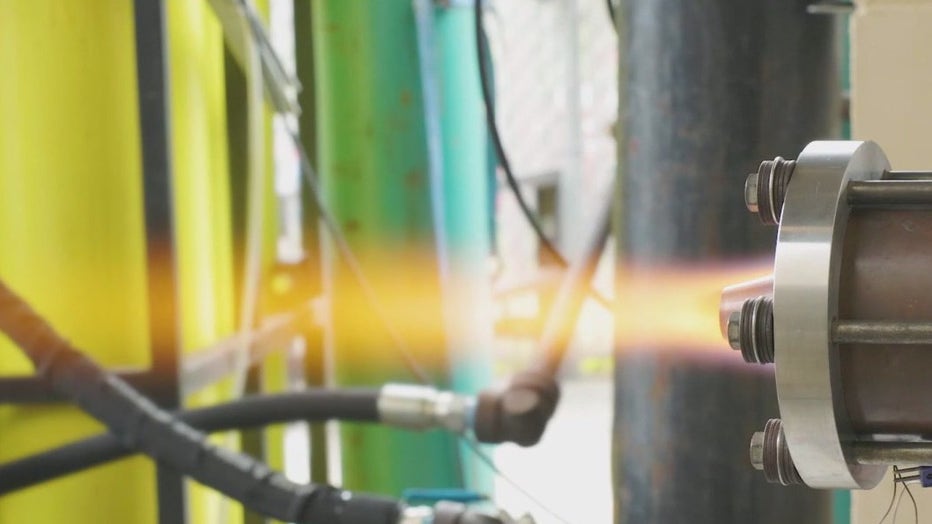UCF develops breakthrough in hypersonic propulsion

Breakthrough in Science: Hypersonic travel
Aerospace engineers at the University of Central Florida are drawing global attention for their successful experiments in hypersonic propulsion. Their work would lead to safe and stabile hypersonic air travel in the future-- that could fly passengers from Tampa to Los Angeles in a matter of minutes.
TAMPA - Aerospace engineers at the University of Central Florida are drawing global attention for their successful experiments in hypersonic propulsion. Their work would lead to safe and stabile hypersonic air travel in the future-- that could fly passengers from Tampa to Los Angeles in a matter of minutes.
UCF has not built such a jet, but professor Kareem Ahmed and his students figured out how to stabilize a hypersonic engine in their lab.
That’s hypersonic as opposed to supersonic. For perspective, NASA’s X-59 supersonic aircraft is designed to fly 925 miles per hour. UCF’s hypersonic design could lead to air travel up to 14 times faster-- up to 13,000 miles per hour!
"The first reaction was actually denial, not believing it’s actually real," said Dr. Ahmed.
For background, we’ve powered engines through internal combustion for more than 200 years.
"When you have fuel injector in a car, it sprays mist into your combustor," said UCF graduate student Steven Schroeder.
The fuel mist burns, which releases energy, which drives motion. We currently ride or fly on comparatively slow, controlled reactions, Dr. Ahmed likens to a burning candle flame.
Instead of a slow burn, a hypersonic engine sets off a chain of powerful explosions, which drive more motion with much less fuel.
"That controlled explosion is highly efficient in releasing that energy compared to your typical candle flame which you fly on today. That is not an efficient process," said Ahmed.
While hypersonic engines are far more powerful and efficient, they can also be unstable.

"The problem with the detonation process is that its unsteady and very hard to control," Schroeder.
That’s where Dr. Kareem Ahmed and his students broke new ground. They developed and tested the world’s first hypersonic engine that can stabilize the detonation.
"We were able to stabilize it repeatedly. It was exciting that now we have the world’s first stabilized ignition wave," Dr. Ahmed noted.
Their first experiment included a tube split into three parts. The first part ignites an injection of hydrogen and oxygen. The second part injects more hydrogen. As the burst shoots into the third section, it hits a 30-degree ramp. That ramp holds and stabilizes the shock wave reaction, creating thrust from the explosion, and a shockwave to keep the explosions going until they cut off the fuel.
SIGN UP: Click here to sign up for the FOX 13 daily newsletter
"Most of the time I say I study fire and how to make fire happen faster," said graduate student Rachel Hytovick. "And then if fire can happen faster, we can get places faster."
They sustain the detonation wave for three seconds before they cut off the fuel. The next steps are to keep repeating the experiment, and to keep expanding it.
"Can we predict its behavior and achieve it every time reliably? Once we’re at that phase, we’re ready for technology transition," Ahmed explained.
While they're still testing the detonation wave engine, they've already conceived how it will look and work in flight. In concept, a more traditional aircraft will take off and carry the hypersonic craft into the air, then let it go. A rocket booster will accelerate it to supersonic speed. Then they'll fire up hypersonic chamber. Shock waves will ignite the fuel, and the sloped design will stabilize the detonation wave—maintaining hypersonic speed until it’s time to land—from one continent to another in a matter of minutes.
"Maybe by 2050 that technology will be realized," said Ahmed
And beyond that, it could shoot future astronauts into space-- and speed travel to the moon, Mars, and beyond.

